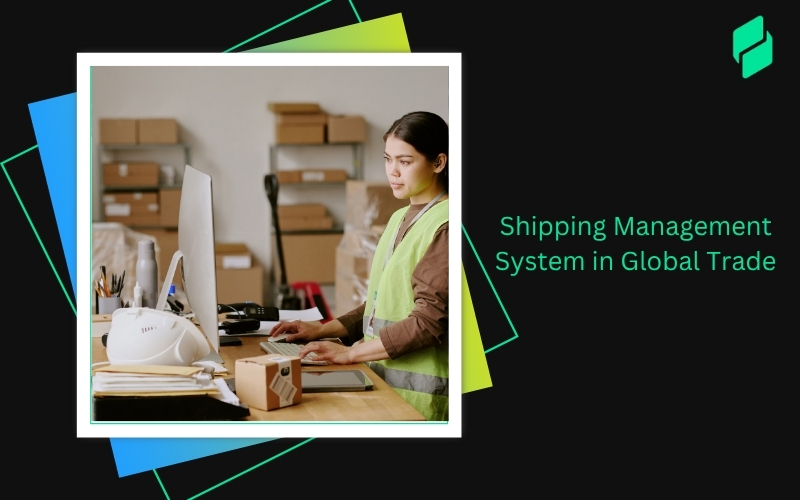Navigating the seas of international shipping requires precise documentation, especially regarding the non DG declaration.
This crucial form, the Shipper's Declaration for Dangerous Goods, is a testament to the safety and compliance of your cargo. It's not just paperwork; it's a promise that your shipment poses no threat to the vessel or the environment.
In the bustling world of import and export, the accuracy of this declaration cannot be overstated. The beacon guides your goods through the choppy waters of customs and regulations, ensuring a smooth voyage from port to port.
Optimize your business: use unlimited savings with Pazago fulfilled now!
Get Started ->When shipping goods internationally, it's essential to classify them correctly to ensure safe and compliant transport.
If your cargo doesn’t fall under hazardous or restricted categories. In that case, you’ll likely be required to submit a non-DG declaration. This declaration enables carriers, freight forwarders, and customs authorities to process your cargo efficiently, avoiding unnecessary delays or compliance issues.
In this blog, you’ll learn why the non-DG declaration form matters, when it’s needed, and how to complete it correctly.
What Is a Non-DG Declaration Form?
When you’re shipping goods internationally, especially by air or sea, you may be asked to provide a non-DG declaration. This document confirms that your cargo does not contain any dangerous or hazardous materials as defined by global transport regulations like those from IATA (International Air Transport Association) or IMO (International Maritime Organization).
By submitting a non-DG declaration, you’re officially stating that:
- Your shipment is safe for handling and transport
- It doesn’t require special packaging, labels, or procedures
- It meets all safety standards for non-hazardous cargo
Even though your goods aren’t dangerous, carriers and customs authorities often need this declaration for documentation and risk management. If you don’t provide it when required, your shipment could face delays, penalties, or additional inspections.
The non-DG declaration is your assurance to everyone involved in the logistics chain that your cargo is non-threatening and compliant, a small step that keeps your shipping process smooth and efficient.
Non-DG Declaration Template
Below is a sample template of the Non-Dangerous Goods (Non-DG) Declaration Form to help you prepare your shipment documentation accurately. Use this as a guide to ensure all necessary information is clearly and correctly provided.
Also Read: Marine Insurance and Claim Declaration Form
Next, you will explore what qualifies as dangerous goods.
What Qualifies as Dangerous Goods?
Dangerous goods are materials or substances that pose a risk to health, safety, property, or the environment during transport. If your shipment contains any of these, you must follow strict regulations for packaging, labeling, and documentation.
Dangerous goods are categorized into different classes depending on the nature of the risk they pose. Below is an overview to help you identify what qualifies:
Key Differences Between Dangerous and Non-Dangerous Goods
As someone managing shipments, you need to understand the differences between dangerous goods and non-dangerous goods so you can comply with shipping regulations and avoid costly errors.
Also Read: Understanding Differences and Costs in Shipping and Handling
In the next section, you’ll find a detailed breakdown of the documentation you need for both non-dangerous and dangerous goods declarations.
Preparation and Documentation for Non-DG and DG Declarations
Let’s break down what you need to know to handle both non-DG declarations and dangerous goods declarations with confidence.
What Is a Non-Dangerous Goods Declaration?
If you're shipping items like clothing, furniture, plasticware, or electronics that are not classified as hazardous, you’ll often be required to submit a non-DG declaration. This document certifies that your cargo poses no risk under the International Maritime Dangerous Goods (IMDG) Code or IATA regulations.
Non-DG Declaration Format Typically Includes:
- Shipper and consignee details
- Description of the goods
- Statement declaring the cargo is non-hazardous
- Signature and date
Providing this document upfront helps you avoid unnecessary checks, improves transparency, and speeds up your shipment’s processing.
What Is a Dangerous Goods Declaration?
If you're dealing with hazardous materials, you're required to submit a Dangerous Goods Declaration (DGD). This form is more detailed and outlines everything regulators, carriers, and handlers need to know to transport your shipment safely and in full compliance with international standards.
Key Components of a Dangerous Goods Declaration:
- Vessel/Voyage Information – Name of the ship and voyage number
- Proper Shipping Name & Technical Name – The official names of the hazardous material
- UN Number – A unique ID assigned by the United Nations for each type of dangerous good
- Hazard Class – Specifies the category of risk (e.g., flammable, corrosive, toxic)
- Packaging Group – Indicates the degree of danger (I = high, II = medium, III = low)
- Quantity & Packaging Details – Total volume/weight and type of packaging used
- Container Number – Identification for the container holding the goods
- Declaration Statement – A mandatory statement that the shipment is packed, labeled, and declared in accordance with the regulations
- Shipper’s Signature – Authorizes and validates the declaration
Next, let’s go through the easy steps to complete your non-DG declaration correctly.
Step-by-Step Guide to Completing a Non-DG Declaration

Completing a Non-DG Declaration is straightforward when you follow the right steps. Here’s a clear guide to help you fill out the form accurately and avoid common mistakes.
- Shipper Information
Enter your full name (or company name), address, and contact details. This identifies the party responsible for the shipment.
- Consignee Information
Include the recipient’s name, address, and contact number. Ensure accuracy, as this is crucial for delivery and customs clearance.
- Shipment Details
List the items included in the shipment. Include product names, HS codes (if known), and a brief description. Mention the number of packages, total weight, and dimensions (if required).
- Declaration Statement
Add a standard statement such as: “We hereby declare that the contents of this shipment are not classified as dangerous goods under applicable IMDG/IATA regulations and do not pose any risk to health, safety, property, or the environment.”
Some carriers may require a more specific statement, so check their format, if available, before writing.
- Signature and Date
The shipper or an authorized representative must sign the declaration. Don’t forget to date the document to ensure its validity.
Common Terms and Language in a Non-DG Declaration
- Non-Hazardous Cargo: Goods that pose no risk during transport.
- IMDG Code / IATA Regulations: International standards for classifying and handling dangerous goods.
- Indemnify: A legal term meaning you accept responsibility and will not hold the carrier liable if the information is incorrect.
- Hereby declare: A formal way of stating that you are affirming the content of the document.
- To the Best of My Knowledge: This phrase often appears in declarations to clarify that the statement is made truthfully, based on what the shipper knows.
Sample Non-DG Declaration Form
Shipper Information:
Company Name: ABC Exports Pvt. Ltd.
Address: 45 Industrial Area, Mumbai, Maharashtra, India – 400001
Contact Person: Rajesh Kumar
Phone: +91 22 1234 5678
Email: rajesh.kumar@abcexports.in
Consignee Information:
Company Name: XYZ Imports Ltd.
Address: 12 Commerce Street, Dubai, UAE
Contact Person: Ahmed Al-Farsi
Phone: +971 4 5678 1234
Email: ahmed.alfarsi@xyzimports.ae
Shipment Details:
Booking Number: IN-EXP-2025-00123
Origin: Mumbai, India
Destination: Dubai, UAE
Number of Packages: 15
Gross Weight: 1200 kg
Description of Goods: Cotton textiles and garments
Declaration:
I hereby declare that the shipment described above does NOT contain any dangerous or hazardous goods as per the regulations of the Directorate General of Foreign Trade (DGFT), the International Maritime Dangerous Goods (IMDG) Code, and the International Air Transport Association (IATA) Dangerous Goods Regulations. The goods are safe for transport and require no special handling or labeling related to hazardous materials.
Signature: __________________________
Name: Rajesh Kumar
Position: Export Manager
Date: 28 June, 2025
Need help with your next shipment? Connect with Pazago to simplify your declarations and stay compliant, every time.
Moving on, it’s equally important to be aware of common mistakes that can affect the validity of your declaration.
Common Mistakes to Avoid When Filling Out a Non-DG Declaration Form
Even though a non-dangerous goods declaration is simpler than its hazardous counterpart, small errors can still cause big headaches. To ensure smooth processing of your shipments, watch out for these common mistakes:
- Incomplete or Incorrect Shipper and Consignee Details
Missing or inaccurate contact information can delay customs clearance or cause delivery errors. - Vague or Insufficient Product Descriptions
Be specific about what you’re shipping. Generic descriptions like “goods” or “merchandise” are often rejected. - Failure to Include a Clear Declaration Statement
Always include the proper wording confirming that your goods are non-dangerous. Omitting this can lead to shipment hold-ups. - Not Signing or Dating the Declaration
An unsigned or undated form is considered invalid and may cause shipment rejection. - Using Outdated or Incorrect Forms
Regulations and carrier requirements can change. Always use the latest form version or check with your freight forwarder. - Ignoring Carrier-Specific Requirements
Some carriers may have their own preferred format or additional statements. Make sure to comply to avoid delays. - Not Verifying Documentation Against Actual Goods
Misclassifying items or providing incorrect details can lead to fines and legal issues.
By avoiding these pitfalls, you’ll keep your shipment compliant and reduce the risk of costly delays or penalties.
In the next section, you’ll find practical tips to make the declaration process easier and stay compliant..
Tips for a Smooth Non-DG Declaration Process
Filing your non-DG declaration correctly can save you time, money, and headaches. Here are some practical tips to help you streamline the process and keep your shipments moving smoothly:
1. Gather Complete and Accurate Information Beforehand
Ensure you have all shipment details, product descriptions, quantities, weights, and addresses ready before filling out the form.
2. Use Clear, Specific Product Descriptions
Avoid vague terms like “miscellaneous” or “goods.” Precise descriptions help customs and carriers quickly identify your shipment.
3. Stay Updated on Carrier and Regulatory Requirements
Check if your freight forwarder or shipping line has specific declaration formats or wording preferences. Using services like Pazago Intel can help you stay informed about the latest carrier requirements and regulatory updates, ensuring your documentation is always accurate and compliant.
4. Double-Check Your Documentation
Review all details carefully, especially shipper/consignee info, product descriptions, and declaration statements, before submitting.
5. Sign and Date the Declaration Properly
A valid signature and date are mandatory for the declaration to be accepted.
6. Keep Copies of All Submitted Documents
Maintain digital or physical copies for your records and to resolve any disputes or queries.
7. Consult Experts When in Doubt
If you’re unsure about classifications or documentation, seek advice from freight forwarders, compliance specialists, or platforms like Pazago to avoid costly mistakes.
Following these tips will help you stay compliant, reduce delays, and build trust with your logistics partners.
Also Read: Essential Shipping Documents Every Importer and Exporter Should Know
Now, let’s take a closer look at why the non-DG declaration form plays such a crucial role in global shipping.
Why Non-DG Declaration Form is Essential in Global Shipping
In international shipping, every document you submit serves a purpose, and the non-DG declaration form is one you can’t afford to overlook. Even if your goods are completely safe, this document ensures that your shipment isn’t mistakenly treated as hazardous, which could lead to costly delays or rejections.
Here’s why it’s essential:
- Carriers and freight forwarders often require it. Most shipping companies won’t move your goods without clear confirmation that they’re not dangerous. The non-DG declaration provides that assurance.
- It speeds up customs processing. When you declare your goods as non-dangerous, you help customs officials categorize and clear your shipment more efficiently, avoiding unnecessary inspections.
- It minimizes risk and liability. You’re affirming that your shipment complies with international safety regulations, protecting both you and the carrier from legal and logistical complications.
- It keeps your documentation clean and complete. Missing or incorrect declarations can result in shipment holds, fines, or even refusal of service.
If you want your cargo to reach its destination on time and without friction, submitting a non-DG declaration is a smart, and often mandatory, step in your shipping process.
Now that you understand the non-DG declaration form is essential in global shipping, it’s equally important to use the right tools to ensure maximum efficiency. Here’s how Pazago can help you.
How Pazago Simplifies Your Non-DG Declaration Process

Here’s how Pazago can help simplify the pre-shipment documentation process and ensure a smooth export journey.
- Digital Document Management: Pazago securely stores essential export documents in a single platform. This reduces errors, improves accessibility, and supports compliance during audits and customs checks.
- Real-Time Visibility: Exporters receive instant alerts on document approvals, submission status, and potential issues. This continuous tracking helps prevent delays and ensures timely action throughout the pre-shipment process.
- Centralised Communication: Pazago brings all stakeholders together, including exporters, freight forwarders, customs brokers, and shipping agents. This streamlines communication, speeds up decision-making, and improves document coordination.
- Integrated Inspection Management: The platform helps manage inspections by organizing and tracking pre-shipment checks, quality assessments, and customs evaluations. This ensures exporters stay compliant and avoid unexpected disruptions.
- Financial Simplification: Pazago simplifies payment tracking and currency exchange management. Aligning financial transactions with documentation requirements helps exporters maintain financial clarity and efficiency.
With Pazago, your export operations become more efficient, reliable, and less stressful, helping you focus on growing your business with confidence.
Conclusion
Properly completing a Shipper’s Declaration of Non-Dangerous Goods is essential to ensure your shipments clear customs smoothly and comply with international shipping regulations. By understanding the importance of this declaration and preparing your documentation carefully, you reduce the risk of costly delays, fines, or shipment rejections. Accuracy, clear product descriptions, and adherence to carrier requirements are essential for maintaining an efficient and hassle-free logistics process.
Simplify your non-DG declaration process with Pazago, a reliable platform that optimizes your document management, ensures full regulatory compliance, and helps you avoid costly errors.
FAQs
Q1: What is a Non-DG Declaration?
A Non-DG Declaration is a formal statement confirming that your shipment contains no dangerous goods, ensuring it can be transported without special restrictions.
Q2: When do I need to submit a Non-DG Declaration?
You typically need to submit this declaration when shipping goods internationally by air or sea, especially if requested by carriers or customs to confirm your cargo is non-hazardous.
Q3: How is a Non-DG Declaration different from a Dangerous Goods Declaration?
A Non-DG Declaration certifies that your goods are safe and non-hazardous, while a Dangerous Goods Declaration is a detailed document required for shipping hazardous materials with strict regulations.
Q4: What information is required on a Non-DG Declaration form?
You’ll need to provide shipper and consignee details, product descriptions, shipment quantities, a declaration statement confirming non-dangerous status, and a signature with date.
Q5: Can I use a generic template for Non-DG Declarations?
Yes, but always verify that the template complies with your carrier’s requirements and current international regulations. Using tools can help generate compliant declarations automatically.
Q6: What are common mistakes to avoid when filling out a Non-DG Declaration?
Avoid incomplete contact info, vague product descriptions, missing declaration statements, unsigned forms, and using outdated templates.
Q7: What happens if I don’t submit a Non-DG Declaration when required?
Your shipment may face delays, additional inspections, fines, or even refusal of transport by carriers or customs.
Q8: How can Pazago help with Non-DG Declarations?
Pazago offers an easy-to-use platform that helps you create, manage, and submit accurate and compliant shipping declarations, reducing errors and speeding up your shipping process.


.png)








